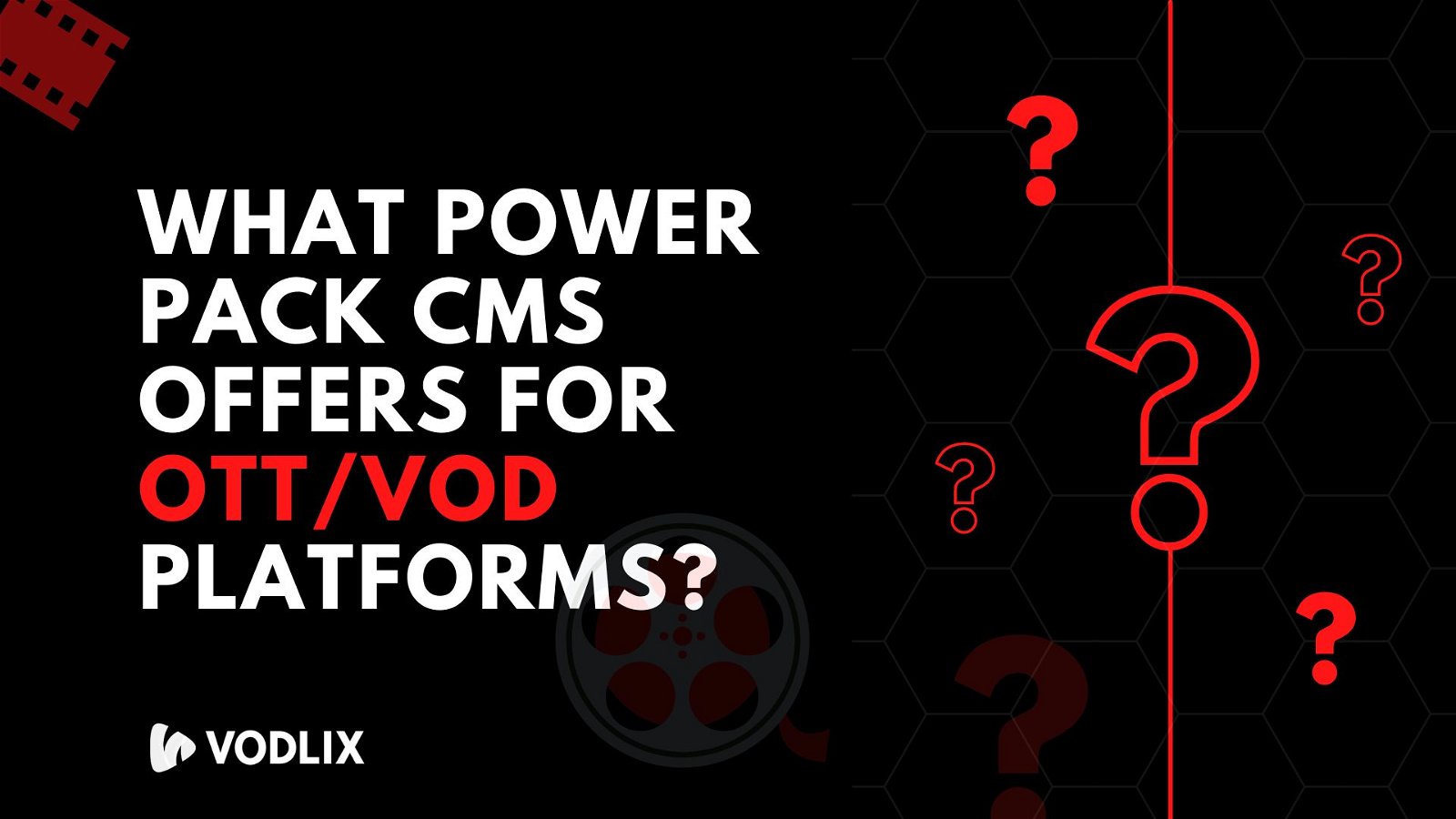CMS is a core of every OTT/VOD platform that ensures the provider gets the right content in the right format. It is a system used to manage and deploy your content. It enhances and truly delivers the experience that will continue to drive engagement.
Managing the content is quite a headache if it is not organized in a systematic way. Therefore, OTT businesses focus on solutions that can increase content workflow and efficiency. To enhance the efficiency of any OTT business working globally needs a solution that can focus on the content workflow.
There should be a solution that one can pursue in the future by predicting its customers’ growth. Once you get good traffic and customers you need to extend the functions and operations of your system with the passage of time.
A good CMS always focuses on providing the user with streamlined and automated workflows that should be aligned with the multi-brand strategic and technical stuff that ultimately provides a next-generation OTT platform.
The Key Points that every CMS must have:
The content of any site is the main thing that engages a user and it provides your customer delight. An OTT platform caters to different user segments that have their own desires and likes so it requires a variety of content needs to be managed. Content may include videos, images live streaming Audio, and all the metadata that goes with it. All this management comes under CMS which simply and efficiently CMS manages the data under a single interface that is user-friendly and attractive. Moreover, it should also facilitate the third parties’ integrations in case of any future partnerships.
Extensibility and flexibility are also important factors of a CMS. When your digital assets are increasing rapidly then there is a need for a system that manages hundreds of thousands of hours of content. A system that should be scalable and adaptable provides the provision of customization in the workflow according to the need.
An OTT platform has a wide range of content that needs to be automated. The workflow should be end-to-end fully automated. All the processes like coding, encryption, and the publishing of the content should be fully automated.
Nowadays premium UHD and HDR content are becoming more popular on OTT platforms. Providing these types of content security and protection rights is itself a challenge that an OTT platform should accomplish because Hollywood studios are more concerned with the security of such content. A CMS should be able to provide security protection using DRM standards, watermarking, and licensing services.
Here is a big compliance and regulatory challenge that content owners face while rolling out their services. A good CMS must provide a system that restricts the content access to the specific regions where the content is restricted by the regulatory authorities and most importantly it should provide age-limited access to the consumer while viewing the content.
An OTT platform works on different business models. It depends upon the requirement of the user and that varies region-wise. Some prefer to adopt the AVOD monetization model whereas some are looking for premium content where no Ads disturbance through TVOD or SVOD. A CMS should support multiple monetization models that are currently available in the market to attract every type of customer.
A CMS system should be able to facilitate dynamic catalogs according to the consumption of the users as every consumer is now demanding personalized content catalogs and to handle this on a massive content takes hours to complete this work. A CMS should be able to handle these solutions.
Content uploaded on a website should have proper metadata. It not only helps the content to be visible but also plays an important part in SEO. A CMS should be able to provide automated metadata ingestion that should also allow the user to edit manually and handle language variations.
An OTT platform is comprised of different experts including engineers editors to translators. A CMS system must provide each individual a separate dashboard that should provide them customization according to their roles and data access policies.
An OTT platform's success rate depends upon analytics and reporting. Netflix and Amazon Prime are examples that we can follow. A CMS system should be integrated with business intelligence (BI) tools that analyze user insights their performance and monetization strategies. It should provide the OTT owner with a detailed report of analytics that can help them in computing the strategies.
The content came from multiple regions and continents via multiple content channels. Similarly, the delivery requires the management of multiple CDNs to maintain a high quality of service. A CMS System should facilitate the management of multiple connection pipelines, whether it can be the cloud or offline. It should provide separate storage for the premium content depending on the nature of the content.
With Vodlix CMS, you can effortlessly manage your content across all devices with their advanced web portal. You can brand the CMS in your own way with full control over the look and feel.


.png)



